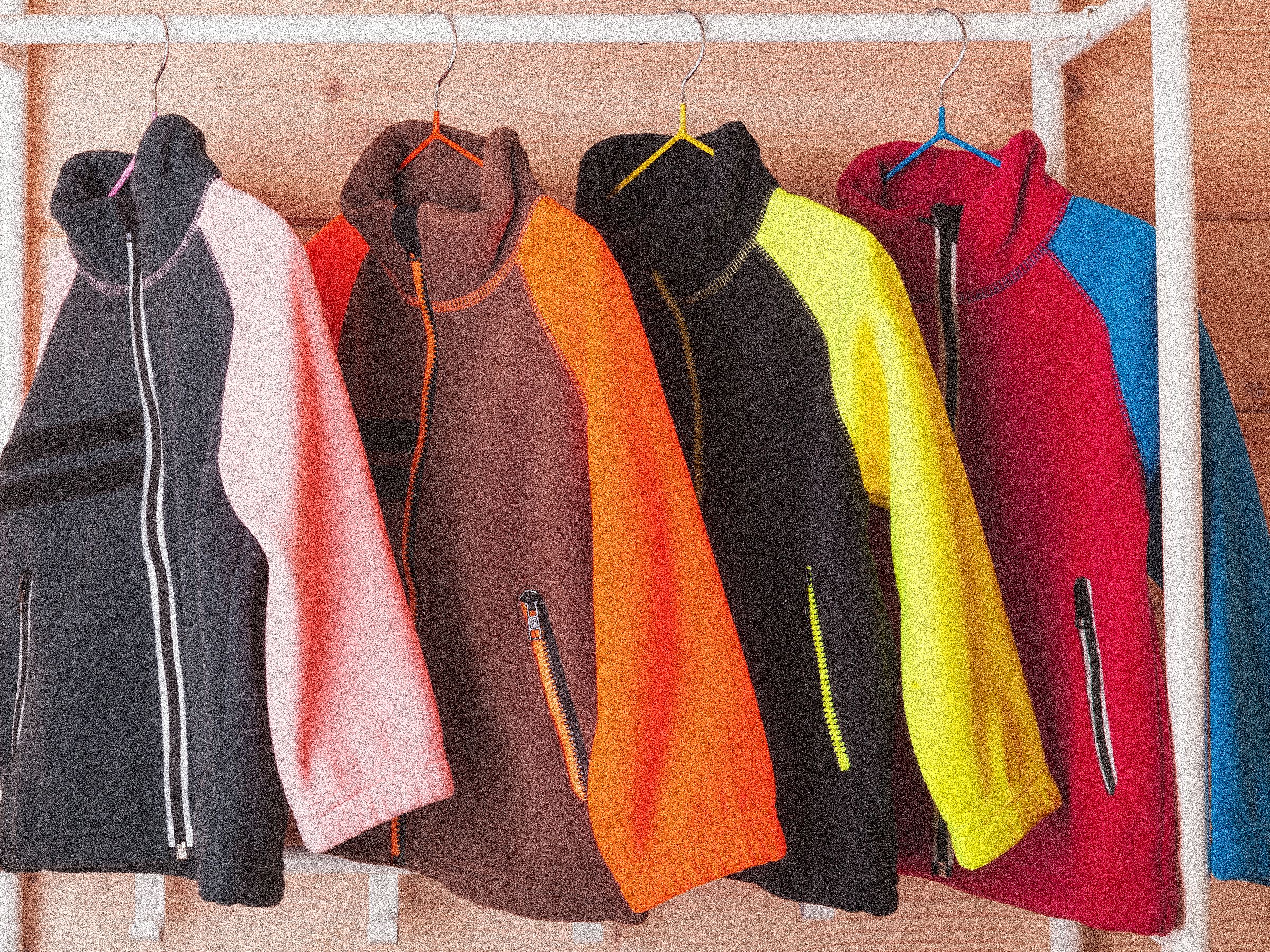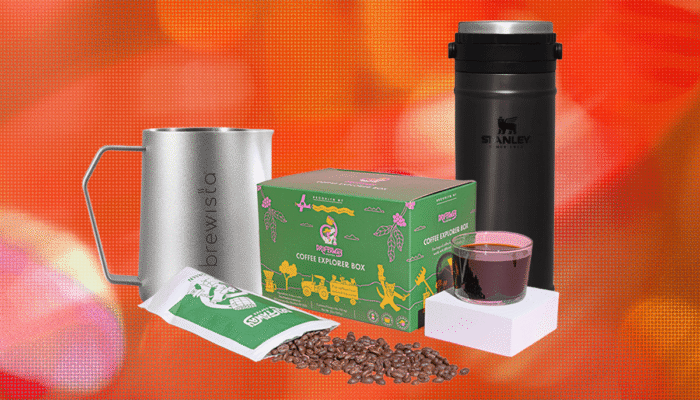If you buy something using links in our stories, we may earn a commission. Learn more.
Ever since I started backpacking in the 1990s, I’ve carried a lightweight fleece jacket. The puffer jacket may have eclipsed it in popularity, and merino wool is sustainable and stink-free. But the humble fleece is durable, breathable, and light. It also costs next to nothing. (I have 30-year-old Marmot fleece that still works great.)
Much as I still love that old fleece, you may have noticed climbers and backpackers wearing a specific kind of new, high-tech performance fleece—whether it’s the Patagonia R1, the Senchi Designs Alpha 120, or the famous, ever-elusive Melanzana Micro Grid. What is it? Do you need it? Here’s a quick rundown of fleece varieties. Once you’re done here, check out the rest of our outdoor apparel guides, from the Best Rain Jackets to the Best Running Shorts.
Power up with unlimited access to WIRED. Get best-in-class reporting that’s too important to ignore for just $2.50 $1 per month for 1 year. Includes unlimited digital access and exclusive subscriber-only content. Subscribe Today.
The Original Fleece
Decathlon Quechua Men’s MH100 Hiking Fleece
Long, long ago (since the 1980s, to be precise), there was just fleece. The lightweight fabric was invented by Malden Mills (now known as Polartec). And it was good, most of the time. The humble fleece jacket I’ve been carrying for all these years is great for breaks on high passes, when the temperature drops suddenly and the wind picks up. While fleece’s wind resistance isn’t as good as a shell, it can hold the wind at bay during hiking breaks. Fleece is also great around camp, and even off the trail, in town.
Depending on the temperature and ventilation options, it can also be a good option for aerobic activities. For example, a half-zip fleece pullover offers a little more ventilation. I often start out spring and fall days hiking in fleece through the cool mornings, and it works great. But when you’re very active—cycling for example—you can overwhelm traditional fleece’s breathability. Textile manufacturers began working on new types of fleece to address the lack of breathability.
Grid Fleece
Squak Mountain Men’s Outdoor Grid Fleece
The fact that OG fleece does eventually get overwhelmed when you’re really moving led Polartec, creators of fleece, to develop a grid fleece known as Polartec Power Grid. Grid fleece weaves in about 5 percent elastane (aka Spandex) in a grid-like pattern (hence the name).
The gaps in the grid allow more moisture out, which increases the breathability significantly. The gridded blocks trap air, keeping you warm. The trade-off is that grid fleece is much less effective in the wind.
Grid fleece is generally not intended to be something you put on at camp, but something you hike in during the day. Really, grid fleece isn’t a great stand-alone garment. Where grid fleece excels is when paired with a windshirt or rain jacket. This combo is especially great for high aerobic-intensity activities like cycling. Pairing grid fleece with my Patagonia Houdini wind shell is perfect for early rides on cold mornings. Grid fleece with a wind shell is better at blocking the wind than traditional fleece and more breathable as well.
Alpha Direct Fleece
Photograph: Leve Outdoor
In 2017, in conjunction with the US military, Polartec created Alpha Direct fleece (sometimes called just Alpha), which is even lighter and more breathable than grid fleece. Alpha fleece uses a fishnet-like weave to hold high-loft fibers in between the weave. For military purposes, this layer was then put under a windproof outer layer, which makes it considerably heavier. But some cottage industry hiking companies got hold of the fabric and started making fleece hoodies using just Alpha Direct.
The result is a garment that has a startlingly good warmth-to-weight ratio, so long as the wind isn’t blowing. As with grid fleece, you want to pair an Alpha Direct fleece hoodie with a windproof shell. Alpha Direct weighs next to nothing, and an entire hoodie can stuff down to not much bigger than your fist. Yet they are nearly as warm as a traditional fleece (until the wind blows). They’ve proved popular with thru hikers and other ultralight backpackers.
The downside to Alpha Direct is that the weave is very fragile. Any kind of rough bushwhacking will quickly shred your Alpha Direct fleece to nothingness. A friend who tried one in the canyon country of Utah likened it to being a big horn sheep—you leave a tuft of your jacket on every passing branch. However, if you stick to areas where abrasion isn’t an issue, or you only wear it in camp, or you pair it with a shell, Alpha Direct fleece wins hands down on warmth-to-weight and for packing down to a tiny size.
For a while, Rab made a jacket called the Alpha Freak (no longer sold) that was an intriguing combination of grid fleece and Polartec Alpha Direct 190 gsm, or grams per square meter, fleece. It even had some Pertex Quantum over the hood to keep your head warmer. By all accounts, this was something of a technical marvel that a lucky few backpackers now carefully horde. Rab, if you’re listening, bring back the Alpha Freak.
Which Kind of Fleece Should You Get?
The answer depends on what you’re doing.
Traditional fleece jacket: This remains the most durable and versatile of the bunch. It breathes, it’s the most windproof, it’s pretty light, and it’s cheap. Solid fleece also dries very quickly (you can wring it out) and is warmer than your average sweatshirt. Go for a full-length zipper, and size up if you want to increase breathability. This is the best all-around option. When you can get one for less than $25 dollars, there’s really no reason not to have one.
Grid fleece: If you’re planning on being active in cold weather, hiking, biking, running, or walking, grid fleece is a better option. You’ll want to pair it with a shell if there’s any wind, but the increased breathability makes grid fleece the best choice for getting after it.
Alpha Direct fleece: The lightest of the bunch, Alpha Direct is great when you’re headed into the backcountry and want an ultralight fleece as your insulating layer. Alpha Direct comes in a variety of fabric weights, from a partly see-through 60 gsm to a more useful (and durable) 120 gsm, all the way up to 190 gsm. I have not tested anything at 190 gsm. The most popular seems to be the 60 and 90 gsm, but I have found 120 gsm feels like the sweet spot between weight (about 8 ounces for a men’s large) and warmth. As an added bonus, 120 gsm is about where you stop looking like a bizarre thru-hiking creature and have a jacket you can walk around town in without attracting stares. (Maybe. Depending on the town.) Just beware hiking in rough terrain. Snagging Alpha Fleece on anything will quickly destroy it.
In the end, depending on what you do outdoors, you might want one of each. Thankfully several of these are quite cheap. For traditional fleece I like a quarter-zip pull over, which can be had at Decathalon for $25, or if you want something a bit more stylish you can go for the Patagonia Micro D pullover for $70.
Grid fleece is the priciest of the bunch—Patagonia’s popular Men’s R1 Air is $180—though there are much cheaper options available. I haven’t tested it yet, but several thru-hikers I know speak highly of Squak Mountain’s grid fleece hoodie ($65). Alpha Direct fleece is getting more popular outside the hiking/backpacking community, which has led to numerous new options we’re in the process of testing, but two tried-and-true standbys remain my top picks.
Both the Senchi Designs Alpha Direct 90 hoodie, and the Leve Alpha 90 hoodie are also great, though availability is limited. That also contributes to Alpha Direct’s allure—many of the small companies that make these layers only make them in small drops.
The downside to fleece is that fleece is a huge contributor to plastic pollution, specifically microplastics, which fleece sheds when you wash it. Alpha Direct fleece is much worse about this than the others (did I mention that it’s fragile?). The loose weave of Alpha Direct sheds pretty bad, both in the wash and on the trail. Many companies making Alpha Direct garments will include a microplastic wash bag, which helps somewhat, but it’s still not ideal.
This is where wool wins. It’s better for the environment and its made of natural, renewable materials. If weight or expense is not your primary concern, I suggest merino wool.




